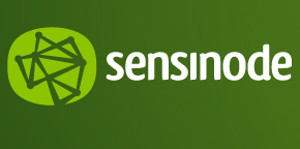The Internet Protocol for Smart Objects (IPSO) Alliance is an organisation, which has served as a resource centre and industry leader since 2008 – whose goal is to seek the establishment of Internet Protocol as the dominant, open standard adopted by industry as the basis for the connectivity of “smart objects”, machine-to-machine and Internet-of-Things networks and applications.
The IPSO Alliance provides a foundation for industry growth by fostering awareness, providing education, generating research, promoting the industry, and creating
a better understanding of IP and other open protocols and standards and the role they can play in the Internet of Things.
Through the work of the IPSO Alliance, many industries have come to realise the benefits associated with using the Internet Protocol within their Internet-of-Things and M2M products and applications. The Alliance is moving forward from explaining “Why use IP in IoT devices” to “How to use IP” down to the individual device level in connected IoT networks.
While the Alliance will continue to educate and inform on the numerous fundamental benefits of IP, it has embarked on defining the set of appropriate protocols, architecture and data definitions for IoT “Smart Objects” so that engineers and product developers working in this field will have access to the necessary tools in order “to build the IoT right” using open standards in a way that the IPSO Alliance considers to be the most valuable for everybody.
Primary goals of the IPSO Alliance are to promote the Internet Protocol as the universal, most secure and most resilient infrastructure on which to base ever more critical and ubiquitous connectivity, and to carry on their core mission of “Internet Protocol enabling the Internet of Things”. It is a goal of the IPSO Alliance to promote the use of IP as the premier solution for access and communication for smart objects as well as to invest in innovation in IP- and open-standards-based Internet-of-Things technology.
The Alliance aims to uphold open standards for IoT connectivity including but not limited to IP, supporting the Internet Engineering Task Force and other technical standards organisations in the development of standards for smart objects and Internet-of-Things connectivity, building on the technical work of these bodies with promotion, outreach and education.
The main objective of the Alliance is not to define new technologies and standards, but to document the use of IP-based technologies defined by the standards-building organisations such as IETF with focus on support by the Alliance of various use cases.
Furthermore, the IPSO aims to promote the use of the Internet Protocol by developing and publishing white papers and case studies and providing updates
on open standards-building progress from associations such as the Internet Engineering Task Force, with a particular focus on Internet-of-Things applications and what IPSO refers to as “Smart Objects”, which promote Web-scale interoperability between IP-connected devices and IoT applications.
The Alliance has recently broadened its standards vision to include education on the best practice for the use of IP and other open protocols to create end-to-end solutions for the Internet of Things, promoting the use of open standards, not just through awareness that these open standards exist but also through education of developers on how to actually use them most effectively in IoT products.
With an aim to understand the industries and markets where M2M and IoT devices can have an effective role in growth when connected using the Internet Protocol, and to organise interoperability tests that will allow members and interested parties to show that products and services using IP-based connectivity for “smart objects” can work together and meet industry standards for communication, the alliance is a beneficial group to further the use of IP in various products.
IPSO aims to build stronger relationships around IP and other open standards within the industry and to create a better understanding of IP and its role in connecting Smart Objects, fostering awareness that the Internet Protocol is an existing, proven networking solution based on open standards that is already deployed and demonstrated to be eminently scalable.
The availability of Internet Protocol, including IPv6 and 6LoWPAN, on constrained embedded systems and low-cost microcontrollers with very limited memory and other resources has made possible a new kind of device and a new kind of Internet, with ubiquitous interoperability between “smart objects” and connected Internet-of-Things devices.

The Internet Engineering Task Force specifies a set of standard protocols for Constrained Resource Environment (CoRE) IP-enabled networks, including the Constrained Resource Application Protocol or CoAP, applicable to low-power and low-bandwidth embedded devices.
CoAP is an application protocol for machines and connected devices, as HTTP is for the World Wide Web, but designed specifically for machine interaction and operation over networks of resource-constrained devices. IPSO’s Smart Object Guidelines provide a common design pattern, an object model that can effectively use CoAP to provide high-level interoperability between “smart objects” and connected software applications on other devices and services.
For more information on the IPSO alliance, you can visit their website from the following URL – http://www.ipso-alliance.org/. And if you’re looking for a partner to help bring your new or existing products to the Internet-of-Things, we have the experience, expertise and team to get the job done. Getting started is easy – join us for an obligation-free and confidential discussion about your ideas and how we can help bring them to life – click here to contact us, or telephone 1800 810 124.
LX is an award-winning electronics design company based in Sydney, Australia. LX services include full turnkey design, electronics, hardware, software and firmware design. LX specialises in embedded systems and wireless technologies design.
Published by LX Pty Ltd for itself and the LX Group of companies, including LX Design House, LX Solutions and LX Consulting, LX Innovations.


